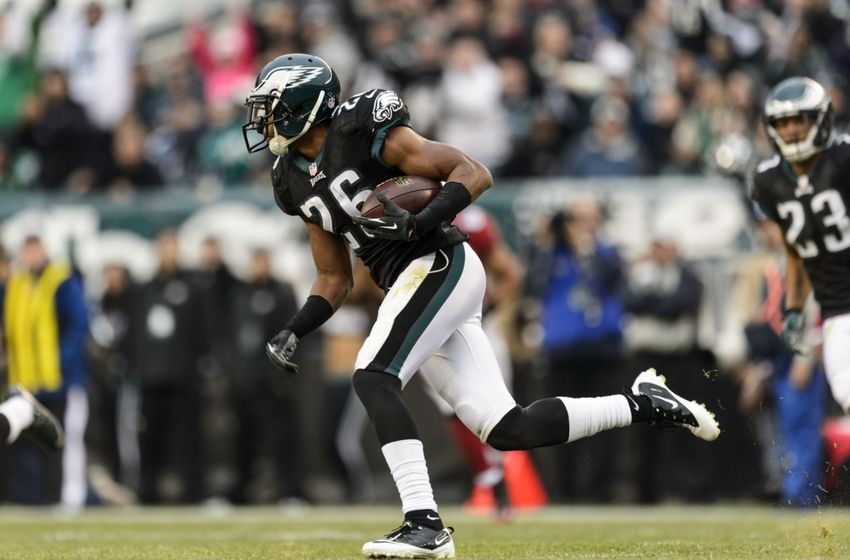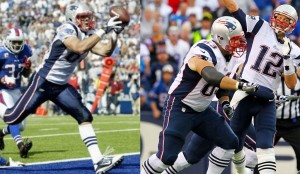- Joined
- Jan 6, 2014
- Messages
- 1,741
- Name
- B and G
http://www.uni-watch.com/
Eagles update: As I wrote yesterday, the Eagles can’t wear their green jerseys in the preseason or in the early weeks of the regular season because Nike is having trouble the team’s shade of midnight green. I spent part of yesterday trying to learn more about this.
First I contacted an Eagles spokesman. In the interests of transparency, here are the questions I asked him via email:
1) Can you confirm [the basic storyline that the green jerseys aren't yet available]?
2) If the Eagles can’t wear green when the season starts, will they wear black for home games, or will they wear white at home?
3) If the Eagles plan to wear black at home, will they seek (or have they already received) a waiver from the NFL rule that normally restricts teams to wearing an alternate jersey no more than twice during a given season?
4) When did the team become aware that the green jerseys wouldn’t be available?
5) Has Nike indicated when the green jerseys will be ready?
6) Can you explain what’s so difficult about midnight green? I realize it’s a “custom color,” but many NFL teams have custom colors. What’s so challenging about this particular hue?
7) The black jersey has green trim on the collar and sleeves, and the white jersey has green numbers. Are those elements appearing in the proper shade of midnight green, or is Nike having difficulty with those elements as well?
The spokesman wrote back to me a few minutes later and provided the following statement, which he said had also been issued to reporters prior to Friday night’s preseason game:
Eagles update: As I wrote yesterday, the Eagles can’t wear their green jerseys in the preseason or in the early weeks of the regular season because Nike is having trouble the team’s shade of midnight green. I spent part of yesterday trying to learn more about this.
First I contacted an Eagles spokesman. In the interests of transparency, here are the questions I asked him via email:
1) Can you confirm [the basic storyline that the green jerseys aren't yet available]?
2) If the Eagles can’t wear green when the season starts, will they wear black for home games, or will they wear white at home?
3) If the Eagles plan to wear black at home, will they seek (or have they already received) a waiver from the NFL rule that normally restricts teams to wearing an alternate jersey no more than twice during a given season?
4) When did the team become aware that the green jerseys wouldn’t be available?
5) Has Nike indicated when the green jerseys will be ready?
6) Can you explain what’s so difficult about midnight green? I realize it’s a “custom color,” but many NFL teams have custom colors. What’s so challenging about this particular hue?
7) The black jersey has green trim on the collar and sleeves, and the white jersey has green numbers. Are those elements appearing in the proper shade of midnight green, or is Nike having difficulty with those elements as well?
The spokesman wrote back to me a few minutes later and provided the following statement, which he said had also been issued to reporters prior to Friday night’s preseason game:
The Philadelphia Eagles have upgraded their uniforms for the 2014 season by taking advantage of the NFL Nike Elite 51 fabrication. As a result of this upgrade, the Eagles will have the Elite 51 technology for all three of their jerseys (White, Midnight Green and the alternate Black).
The Eagles will use their white and black jerseys throughout the early portion of the season, including tonight’s game at New England in which they will wear their black jerseys and white pants. The Midnight Green jerseys require extra time to produce since it is a custom color and will not debut until later in the 2014 season.
According to Nike, the Elite 51 uniform chassis offers a fully integrated uniform system rooted in body-led design. The NFL Nike Elite 51 uniform chassis is built for a body-contoured fit resulting in zero distractions to help amplify speed.
Obviously, that didn’t directly address any of my questions, so I wrote back: “Thanks. But can you address any of my other questions — i.e., when will the green jerseys be ready, and have the Eagles decided whether to wear black or white for home games in the interim, and so on?”
His response: “We typically wear white jerseys at home early in the season anyway.”
My response: “So is that officially the plan? Also, sorry to be pain, but has Nike indicated when the green jerseys will be ready? When did the team become aware that the green jerseys wouldn’t be available in time for the start of the season? What is so challenging about reproducing the Eagles’ shade of green?”
His response: Silence.
I find it tremendously frustrating when publicists behave this way. If you can’t address my specific queries, just say, “We can’t offer any further details at this time.” Dodging or ignoring my questions puts me in the position of having to ask them again and again, which casts me in the role of a pest (“Sorry to be a pain, but…”) when in fact I’m just doing my job. Sigh.
I also posed a similar set of questions to Nike. No response yet. Granted, it’s still the weekend — maybe they’ll respond on Monday. Stay tuned. (Meanwhile, reader Dan Fuller has written a good account of why colors like midnight green present production challenges — recommended.)
The Eagles will use their white and black jerseys throughout the early portion of the season, including tonight’s game at New England in which they will wear their black jerseys and white pants. The Midnight Green jerseys require extra time to produce since it is a custom color and will not debut until later in the 2014 season.
According to Nike, the Elite 51 uniform chassis offers a fully integrated uniform system rooted in body-led design. The NFL Nike Elite 51 uniform chassis is built for a body-contoured fit resulting in zero distractions to help amplify speed.
Obviously, that didn’t directly address any of my questions, so I wrote back: “Thanks. But can you address any of my other questions — i.e., when will the green jerseys be ready, and have the Eagles decided whether to wear black or white for home games in the interim, and so on?”
His response: “We typically wear white jerseys at home early in the season anyway.”
My response: “So is that officially the plan? Also, sorry to be pain, but has Nike indicated when the green jerseys will be ready? When did the team become aware that the green jerseys wouldn’t be available in time for the start of the season? What is so challenging about reproducing the Eagles’ shade of green?”
His response: Silence.
I find it tremendously frustrating when publicists behave this way. If you can’t address my specific queries, just say, “We can’t offer any further details at this time.” Dodging or ignoring my questions puts me in the position of having to ask them again and again, which casts me in the role of a pest (“Sorry to be a pain, but…”) when in fact I’m just doing my job. Sigh.
I also posed a similar set of questions to Nike. No response yet. Granted, it’s still the weekend — maybe they’ll respond on Monday. Stay tuned. (Meanwhile, reader Dan Fuller has written a good account of why colors like midnight green present production challenges — recommended.)


